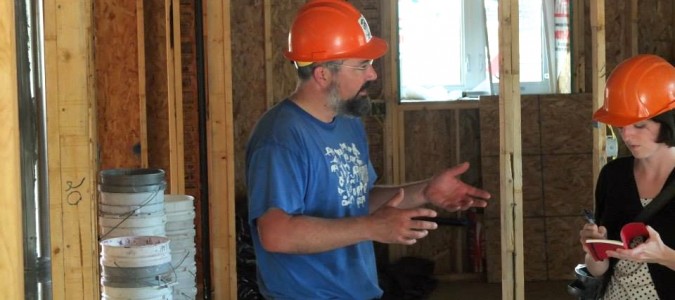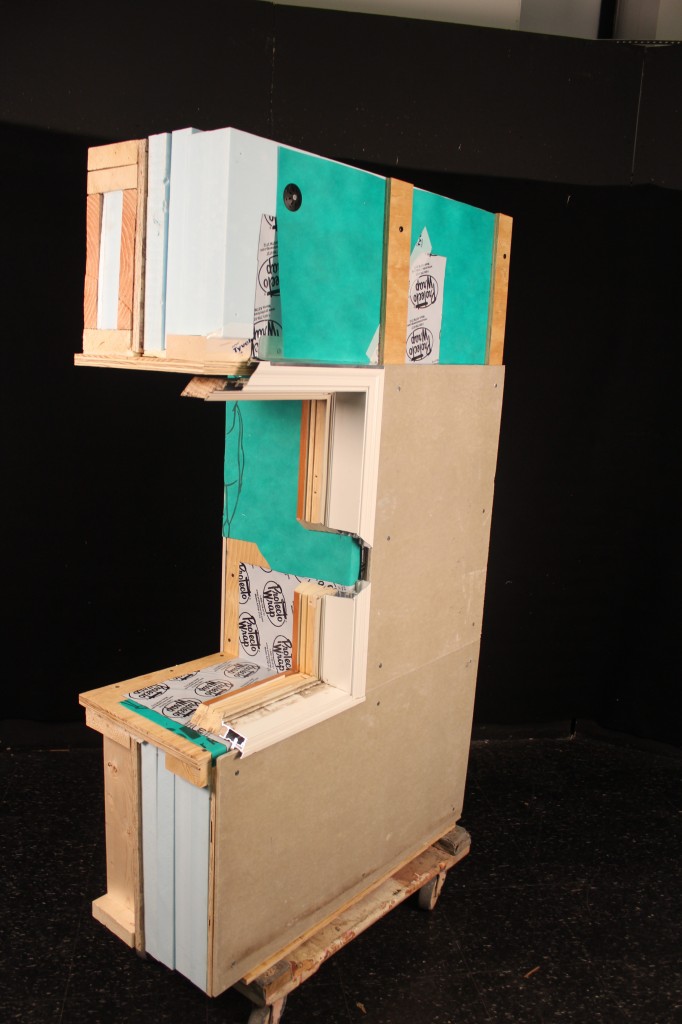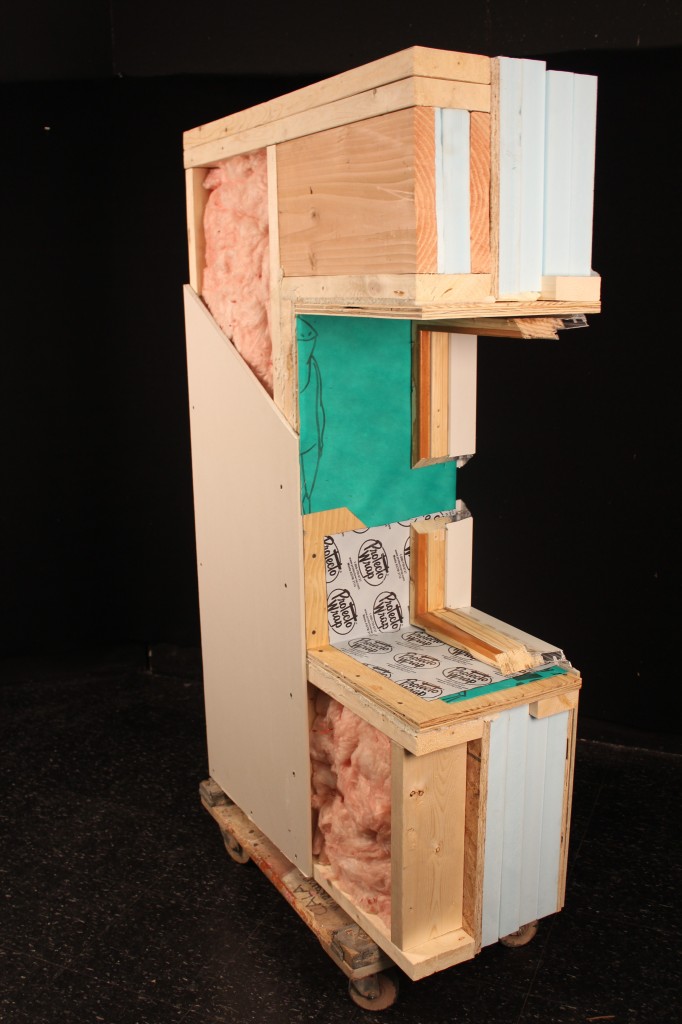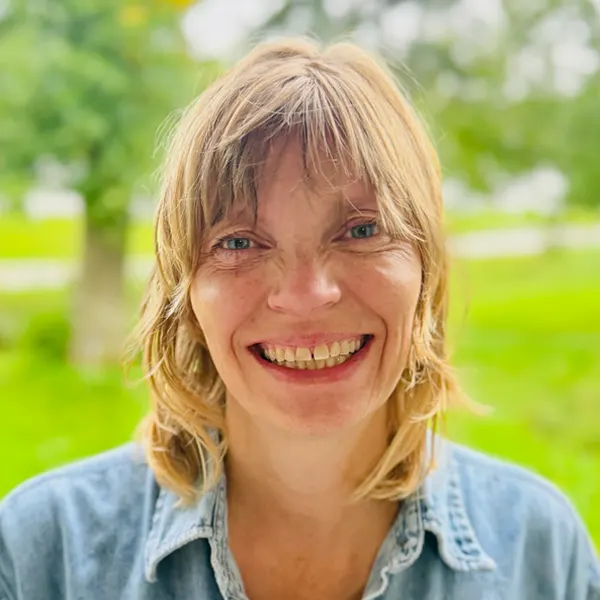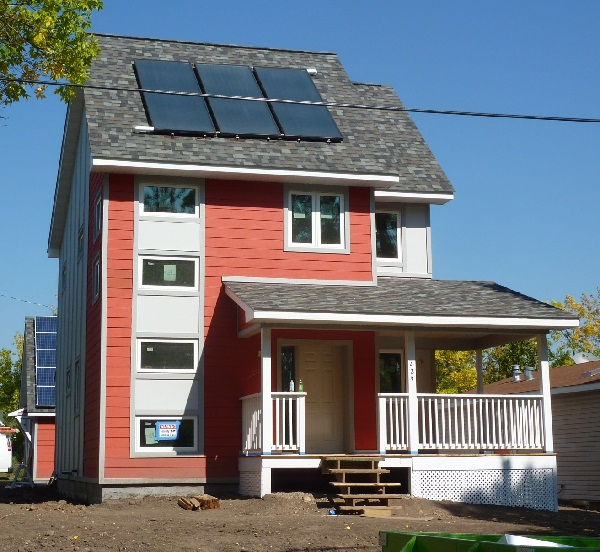
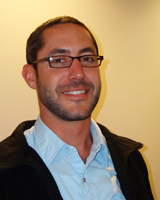
A net zero energy home is a house that will produce as much energy in a year as it uses. Different designers choose different methods to obtain such a goal, because unique situations require specific techniques. In this profiled house, the Northside Net Zero Home, some of the energy efficient features include LED lights and increased insulation. A solar photovoltaic array generates electricity; solar power also heats domestic hot water. How would your home measure up?
Growing up on a farm in Western Minnesota, Dan Handeen, now a Research Fellow at the University of Minnesota’s Center of Sustainable Building Research, spent plenty of time running around in the woods like a wild child. As he explored the places around him, he became intimately aware of the interconnected systems that integrate our world and environment. It is this same systems approach that led him to working on the Northside Net Zero Home recently built in the Hawthorne EcoVillage in Minneapolis.
Critical Partnerships
From the very beginning of our conversation, Handeen emphasized the collaborative nature of the design and construction. At the U of M, School of Architecture Adjunct Assistant Professor and principal of ALM Design Studio Lucas Alm was a critical partner in teaching the two classes that designed the building. The building’s solar array was designed and installed by a class led by Todd Fink from Century College’s Solar and Renewable Energy Technical Program. And of course, the students from both schools were important members of the team.
Habitat for Humanity of the Twin Cities was both a partner and client, providing the funding and space for construction of the building. However, the partnership with Habitat also significantly influenced the design of the house in unexpected ways. For example, the team chose to use extruded polystyrene foam insulation in the walls, which provides better insulation in less space. However, doing so would have been cost-prohibitive had a Habitat partner not donated supplies. So without this established partnership, the team would likely not have chosen to use extruded polystyrene foam as the insulation. In fact, in another home designed for PPL in the same semester, the team chose cellulose insulation, which is bulkier but cheaper, and derived from recycled materials.
Working with Habitat also gave the group access to volunteer labor, people Handeen said could be “taught the right way to build this house, the first time.” One of the biggest challenges facing sustainable design, Handeen says, is the lack of expertise among builders. Builders will often tack on a premium when building an energy efficient home, not because the work is inherently harder but simply because it’s different. Working with volunteers who needed training anyway meant that building this house was essentially no different from building a standard house in terms of labor requirements.
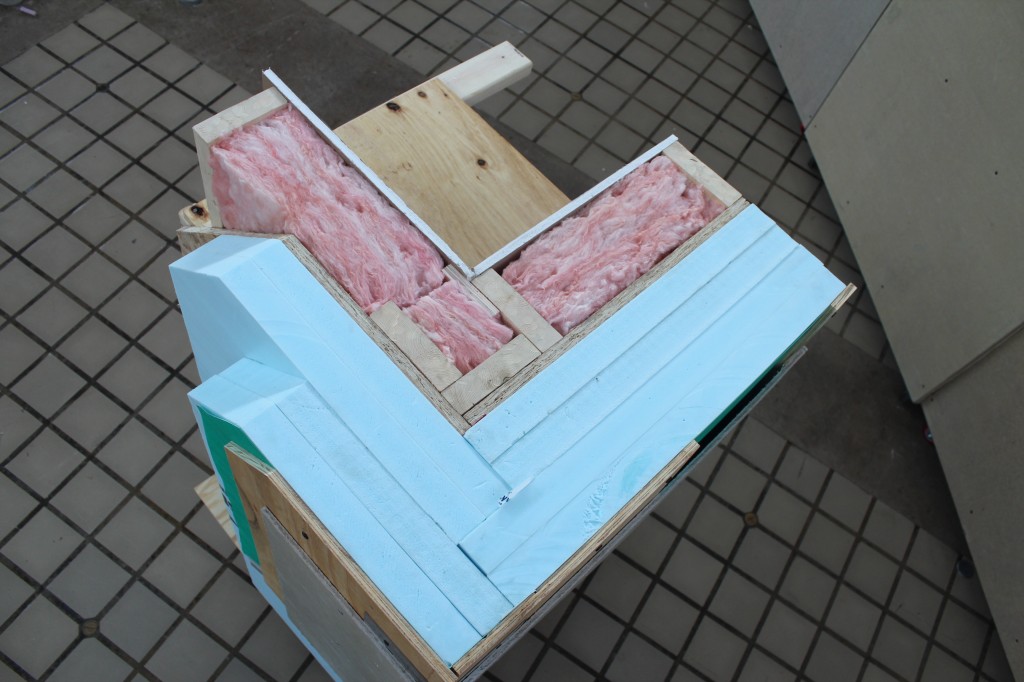
Working with Students
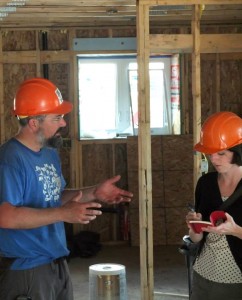 The entire process was a teaching and learning experiment, and a unique opportunity for students to be involved in the process of building design from research to completion. Students faced the reality of the interconnected pressures of design as they grappled with balancing the competing goals of obtaining maximum energy efficiency, using the appropriate materials, meeting a budget, and producing a pleasing appearance.
The entire process was a teaching and learning experiment, and a unique opportunity for students to be involved in the process of building design from research to completion. Students faced the reality of the interconnected pressures of design as they grappled with balancing the competing goals of obtaining maximum energy efficiency, using the appropriate materials, meeting a budget, and producing a pleasing appearance.
In order to be successful, the students had to function as a team. Students learned to rely on each other’s strengths, recognizing that they were also a system in which each part played a critical role and was simultaneously dependent on the other parts around it. As Handeen notes, such collaboration is “the only way truly sustainable design comes about.” That is the beauty of teaching design.
What’s Next?
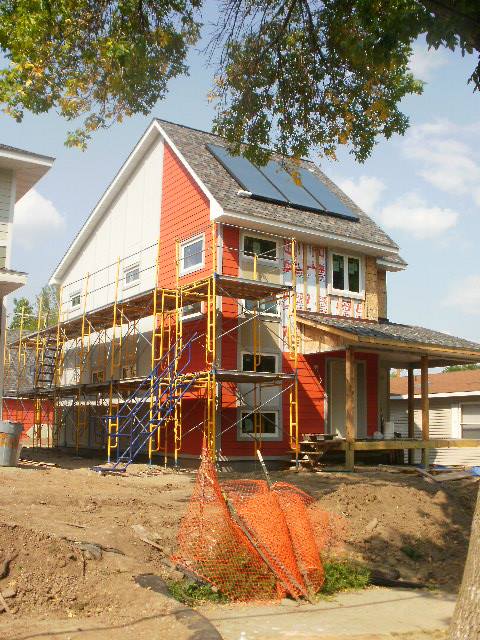 How can we build homes that will integrate more seamlessly with our environmental systems? Handeen says that the first step is communication. While there is plenty of information, there aren’t enough people talking about net zero homes or incorporating sustainable design into their buildings. As noted before, builder capacity is a major challenge if a homeowner has to pay a premium to include what Handeen considers “standard” technology. To address this particular hurdle, the Department of Energy has created a Challenge Home training and certification program. At the same time, Handeen hopes that he will be able to reach consumers by developing an exhibit for the Minnesota State Fair; he is currently working on a proposal.
How can we build homes that will integrate more seamlessly with our environmental systems? Handeen says that the first step is communication. While there is plenty of information, there aren’t enough people talking about net zero homes or incorporating sustainable design into their buildings. As noted before, builder capacity is a major challenge if a homeowner has to pay a premium to include what Handeen considers “standard” technology. To address this particular hurdle, the Department of Energy has created a Challenge Home training and certification program. At the same time, Handeen hopes that he will be able to reach consumers by developing an exhibit for the Minnesota State Fair; he is currently working on a proposal.
However, there are also some concrete things we can be working towards. Handeen’s three goals are:
- Building houses that are “net zero ready.” That means that while it might be cost-prohibitive now to install solar panels on every home, for example, every new home should be built with the capacity to easily add solar panels as prices drop.
- Working toward affordability, partially through training labor, and partially through addressing high prices of newer technology.
- Retrofitting older homes so that individuals don’t need to find a new place to live just so that they can live more energy-efficiently.
And, above all, we need to remember the importance of systems and interconnectedness, something that the prairies, woods, and waters of Minnesota prove to us every day.

